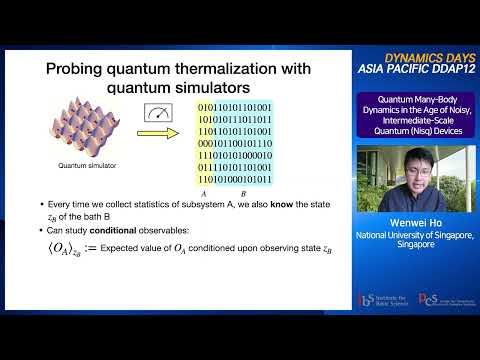Description:
Save Big on Coursera Plus. 7,000+ courses at $160 off. Limited Time Only!
Grab it
Explore quantum many-body dynamics in the era of Noisy, Intermediate-Scale Quantum (NISQ) devices through this 54-minute lecture by Wenwei Ho from PCS Institute for Basic Science. Delve into the global efforts in quantum computing technologies and their potential for investigating quantum many-body physics beyond conventional material experiments. Discover how these platforms enable the probing of novel phenomena in dynamics, particularly a deeper form of quantum thermalization. Learn about the union of many-body and quantum information frameworks, and how they yield new insights into fundamental phenomena. Examine the concept of universal randomness as a resource for quantum information science applications, such as quantum state learning. Follow the syllabus covering topics like quantum simulators, measurements, probing quantum thermalization, understanding projected ensembles, quantum state k-designs, and experiments with the 1d Periodically-kicked Ising Model.

Quantum Many-Body Dynamics in the Age of NISQ Devices
Add to list